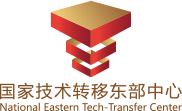After the globalization of industry and services, we have entered a new stage in the globalization of science and technology. An important component of the globalization of science and technology is the globalization of technology transfer, the most prominent manifestation of which is the rapid flow of scientific and technological talents, research technologies, scientific and technological funds, scientific and technological data and other elements of technology transfer on a global scale.
Over the past decade, global trade in technology has grown at a much faster rate than total global economic trade and is gradually replacing traditional trade in tangible products as the most important form of international trade. The globalization of technology transfer, as it is referred to here, includes technology licensing between two enterprises, cross-border technology mergers and acquisitions between enterprises, as well as cross-border entrepreneurship by R&D personnel with technology, and the establishment of R&D centres in other countries to make use of local resources.
In the new era of globalization of technology transfer, the definition of core competitiveness of enterprises has changed to "the ability to fully integrate and utilize all kinds of resources to meet the changing market demand". An international perspective, looking globally for the resources - including technological resources - needed to leapfrog.
In the process of globalization of technology transfer, China's economy continues to grow at a rapid pace and is increasingly integrated into global competition, making the demand for advanced technology by enterprises increasingly urgent. At present, China has become one of the important target countries for international technology transfer. Especially in the aftermath of the financial crisis, European countries generally lacked the capital to industrialize new technologies, while China, which maintained its economic dynamism, had an advantage in that regard.
In recent years, the pace of internationalization of Chinese enterprises has significantly accelerated. Not only large enterprises, but also a number of innovative SMEs with unique characteristics are actively seeking to accelerate their development through the globalization of technology transfer. For example, Sany Heavy Industries merged with Putzmeister, Germany; Zoomlion merged with CIFA, Italy; Perfect World merged with Cryptic Studios, a North American game research and development studio; TNT has relied on industrial alliances to promote the development and industrialization of international standards by Chinese and Japanese enterprises; and Everest and the Russian National Academy of Sciences cooperated to develop advanced imaging systems. At the same time, in order to further promote the flow and convergence of technology transfer elements and resources in various regions, the National Center for Technology Transfer East (www.netcchina.com) initiated the China Technology Transfer Alliance, which aims to further accelerate the supply-side structural reform, enhance the role of the National Center for Technology Transfer East as a hub for innovation elements and allocation of scientific and technological resources, and assist in the implementation of innovation-driven development. It has become an urgent question that the technology transfer industry needs to answer, with the strategy of creating a new pattern of national technology transfer integration.
The globalization of technology transfer has provided Chinese enterprises with an opportunity to keep pace with the international advanced level, advanced concepts and advanced models.




